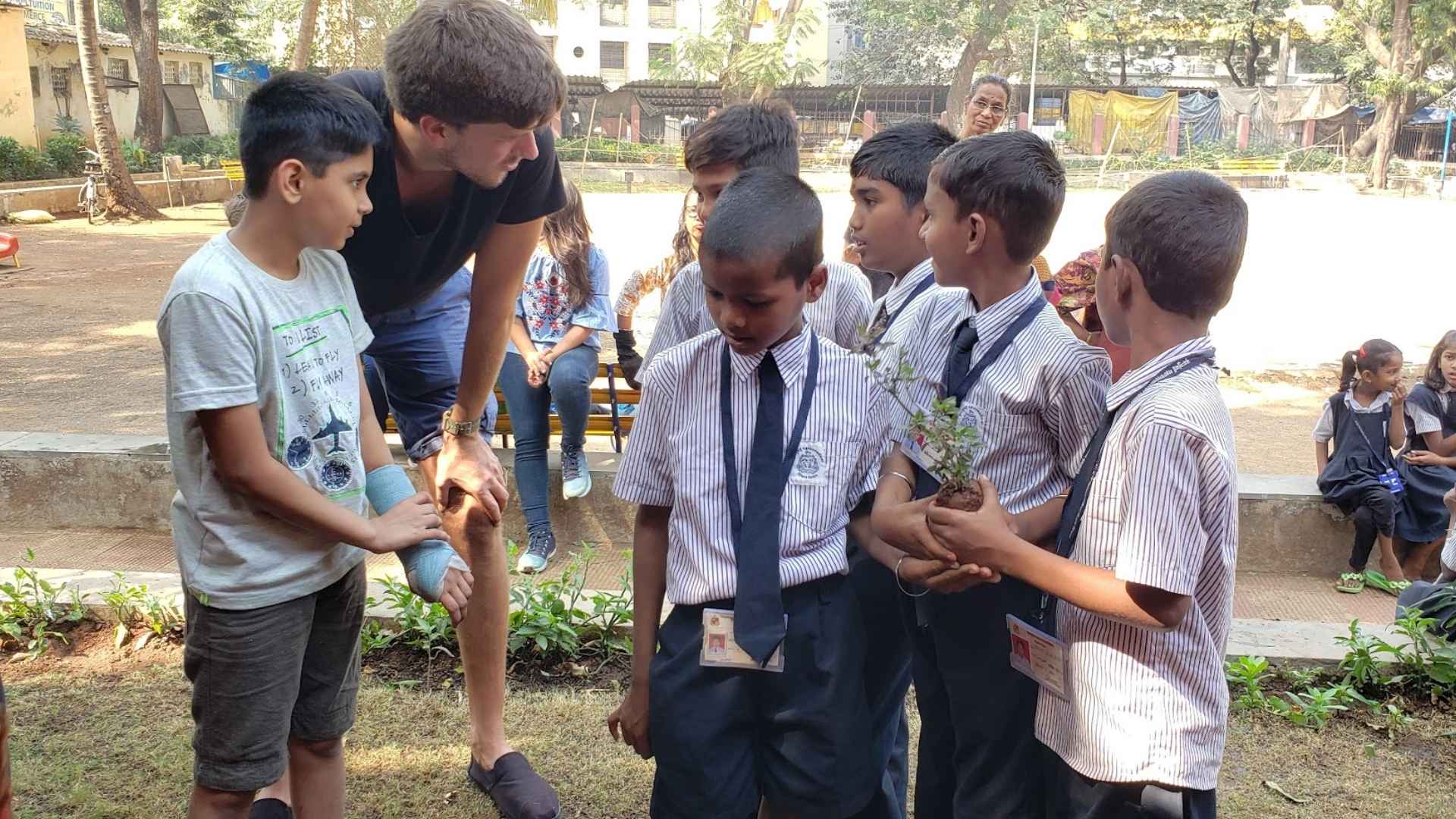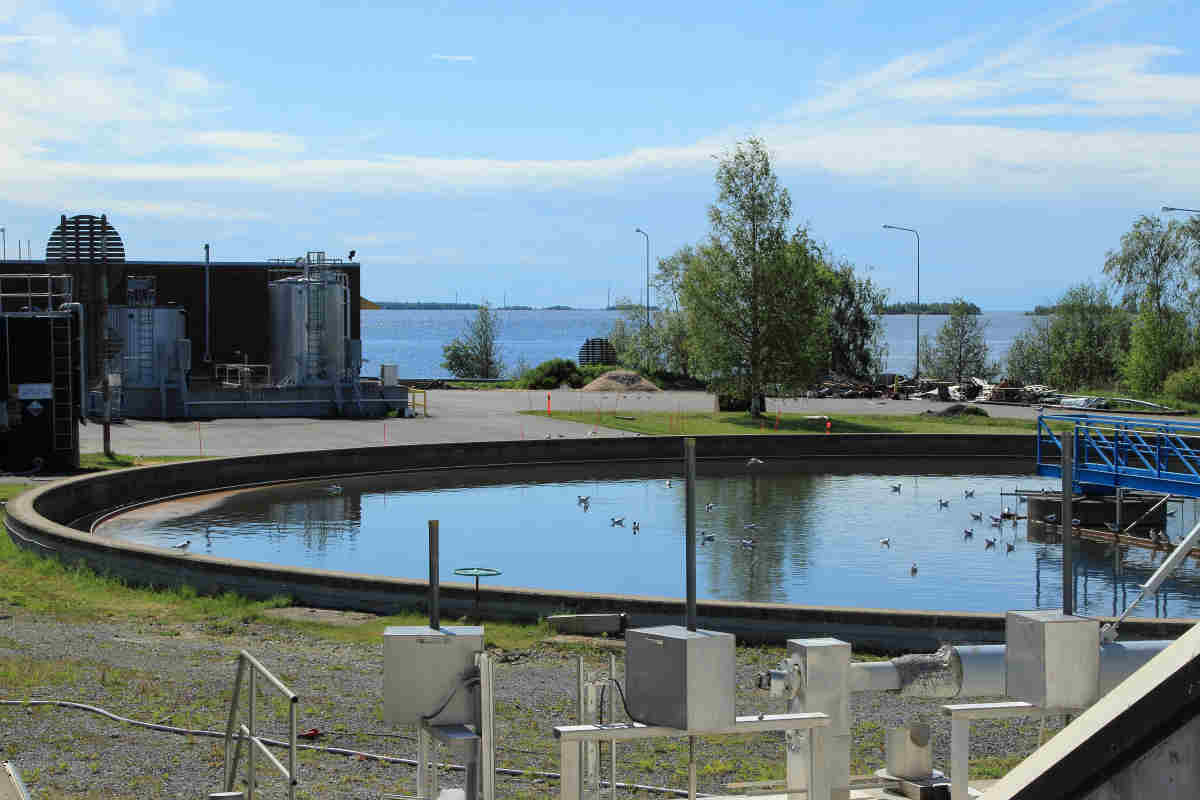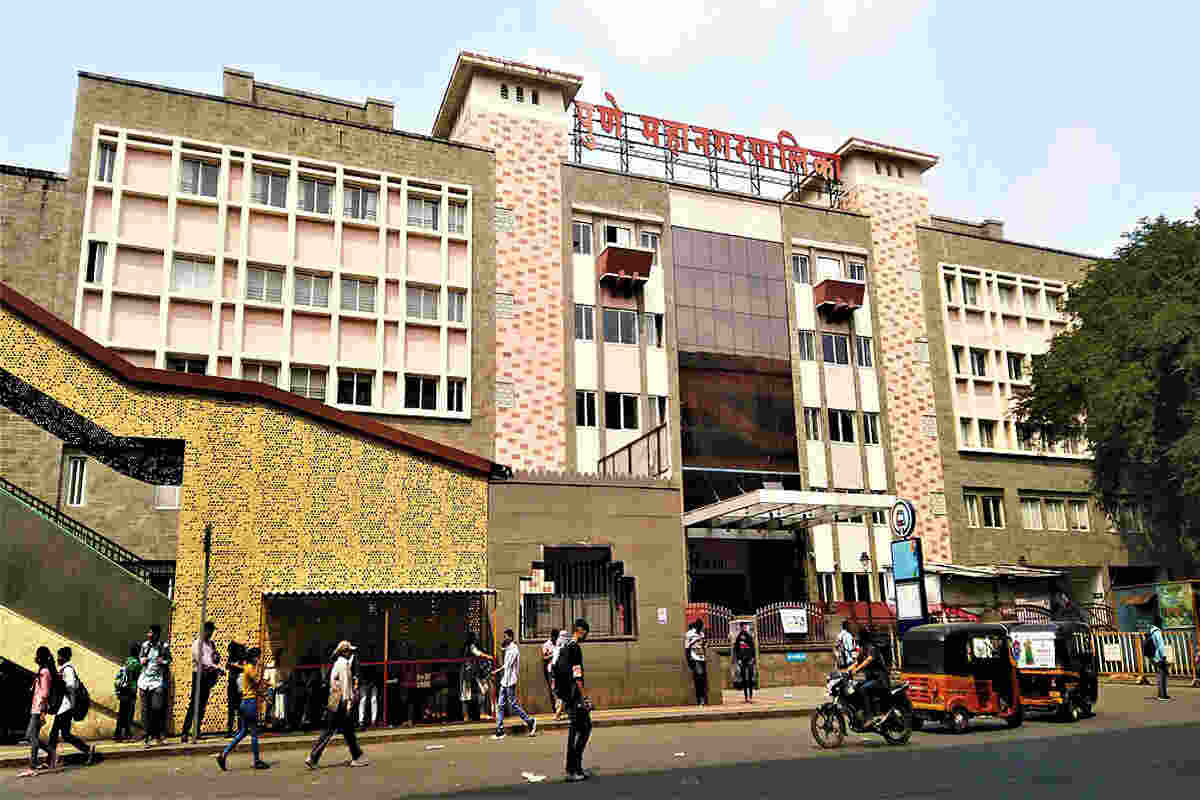Urban biodiversity plays a crucial role in sustaining ecological balance within cities. It encompasses the diverse range of plant and animal species that inhabit urban landscapes, contributing to ecosystem services such as air purification, temperature regulation, and water filtration.
Thriving urban biodiversity also enhances human well-being, offering recreational, aesthetic, and psychological benefits. However, rapid urbanization has led to a significant decline in biodiversity, threatening the resilience of cities against environmental challenges.
The expansion of urban infrastructure often comes at the cost of natural habitats. Deforestation, land-use changes, pollution, and climate change contribute to habitat fragmentation, disrupting ecosystems and endangering native species. The replacement of green spaces with concrete structures leads to the heat island effect, reduced pollination, and a decline in soil health.
Additionally, the introduction of exotic species often displaces native flora and fauna, further exacerbating biodiversity loss. These challenges highlight the urgent need for conservation and restoration efforts within urban areas.
Earth5R, a global environmental organization, is at the forefront of addressing these challenges through sustainable solutions. With a mission to restore biodiversity, mitigate climate change, and foster community-driven environmental action, Earth5R has pioneered various ecological initiatives.
One of its most impactful approaches is the Urban Biodiversity Revival Blueprint, which focuses on revitalizing degraded urban landscapes through native plantation drives. By promoting the planting of indigenous species, Earth5R enhances ecosystem stability and encourages local wildlife to thrive.
This article delves into Earth5R’s scientifically driven approach to urban biodiversity restoration. It explores the significance of native plantations, the methodology behind these drives, and the measurable impact of such initiatives. Through research-backed evidence and case studies, we will demonstrate how Earth5R’s blueprint offers a scalable and effective solution to biodiversity loss in urban environments.
The Importance of Urban Biodiversity
Biodiversity in urban ecosystems plays a fundamental role in maintaining ecological balance and ensuring the sustainability of cities.
Urban biodiversity encompasses a wide range of species, from plants and insects to birds and mammals, all of which contribute to essential ecosystem services. These services include air purification, carbon sequestration, temperature regulation, and water filtration, all of which are crucial for climate resilience.
Green spaces filled with diverse plant life help absorb pollutants, reduce flooding, and mitigate the urban heat island effect by lowering surface temperatures. Moreover, urban biodiversity supports mental well-being, providing residents with natural spaces for recreation and stress relief.
Benefits of Native Plantations in Urban Settings
Native plantations form the backbone of urban biodiversity restoration efforts. Unlike exotic species, native plants are well-adapted to the local climate, soil conditions, and ecological networks, making them more sustainable and beneficial for the environment.
Native flora supports local pollinators such as bees and butterflies, ensuring the survival of key species that contribute to food production and ecosystem health. Additionally, native trees and shrubs provide habitat and food sources for birds and small mammals, helping maintain a balanced urban ecosystem.
Scientific research has shown that native plant diversity enhances urban soil health by fostering beneficial microbial communities and preventing soil erosion. Furthermore, studies indicate that cities with well-planned native green spaces experience lower air pollution levels, improved groundwater retention, and reduced temperatures, making them more livable and climate-resilient. A study published in Urban Forestry & Urban Greening found that increasing native tree cover in cities significantly reduces air pollution by absorbing harmful particulates and carbon dioxide.
Scientific Evidence and Case Studies on Biodiversity Loss in Cities
The rapid expansion of cities has led to severe biodiversity loss. A study published in Nature (2020) found that urbanization has resulted in a 30% decline in species diversity in major metropolitan areas over the past century. Habitat destruction, pollution, and climate change have caused a decline in insect populations, which in turn affects bird and plant reproduction cycles.
Research from the UN Environment Programme (UNEP) highlights that one million species are at risk of extinction, with urbanization being a key driver of this crisis.
Cities like Singapore and Curitiba, Brazil, have successfully implemented native afforestation programs to counteract biodiversity loss. Singapore’s extensive urban greenery projects have increased the presence of pollinators and native bird species, while Curitiba’s biodiversity corridors have restored ecological connectivity, proving that strategic native plantations can reverse biodiversity loss.
By prioritizing native plantations, urban areas can transform into biodiversity hubs, enhancing ecological resilience and sustainability. The next section will explore the science behind native plantation drives and their role in urban restoration.
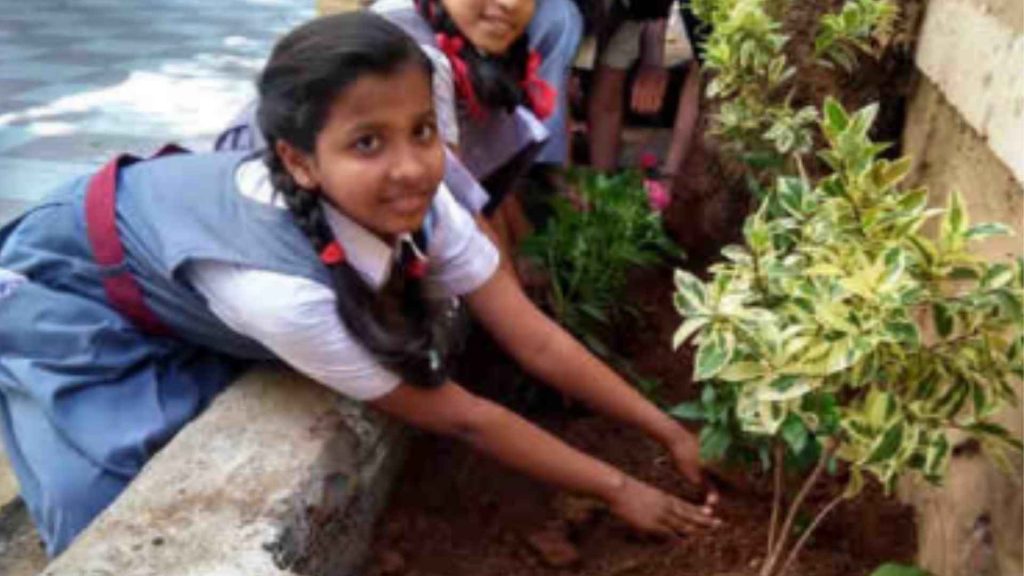
Understanding Native Plantation Drives
Native plantation drives are a strategic approach to ecological restoration, focusing on planting indigenous plant species to rejuvenate degraded urban landscapes. These plantations aim to restore natural ecosystems, support biodiversity, and enhance climate resilience by reintroducing species that have historically thrived in a particular region.
Unlike traditional afforestation projects that often use fast-growing exotic trees, native plantation drives prioritize species naturally adapted to local soil, climate, and wildlife interactions.
Differences Between Native and Exotic Species
Native species are plants that have evolved in a specific region over thousands of years, forming intricate relationships with the local ecosystem. These species have adapted to local weather conditions, soil composition, and wildlife, making them highly sustainable and beneficial for urban biodiversity. Examples include Neem (Azadirachta indica) in India, Oak (Quercus spp.) in North America, and Baobab (Adansonia digitata) in Africa.
In contrast, exotic species are non-native plants introduced, either intentionally or unintentionally, into new environments.
While some exotic plants may thrive, many become invasive, outcompeting native species for resources. For example, Eucalyptus and Acacia, introduced for commercial forestry in various parts of the world, often lead to soil degradation, reduced groundwater availability, and disruption of native habitats. The unchecked spread of exotic plants can alter the ecological balance, leading to a decline in native flora and fauna.
How Native Plants Support Local Biodiversity
Native plants form the foundation of a healthy ecosystem by providing essential resources for wildlife. Their flowers, seeds, and foliage serve as food sources for local pollinators, birds, and herbivorous animals.
For instance, in urban areas, native flowering plants like Milkweed (Asclepias spp.) in North America play a vital role in sustaining Monarch butterflies, whose populations have declined due to habitat loss. Similarly, native fruit-bearing trees attract birds, which help in seed dispersal and ecosystem regeneration.
Moreover, native plantations contribute to microhabitat creation, supporting a diverse range of organisms. Understory shrubs provide shelter for small mammals, decomposing native leaves enrich soil microbes, and tree canopies act as nesting sites for urban birds. By fostering these interconnected relationships, native plants enhance species diversity and ecological stability in urban areas.
Research-Backed Examples of Successful Native Reforestation in Urban Areas
Miyawaki Forests in India – The Miyawaki method, which involves planting dense native forests, has been widely adopted in cities like Mumbai, Bangalore, and Chennai. Research has shown that these mini-forests grow 10 times faster and support 20 times more biodiversity than conventional tree plantations.
New York’s Million Trees Initiative – This project focused on planting native species such as Red Maple and Sweetgum. Studies found that the initiative significantly increased urban bird diversity and improved air quality.
Singapore’s Native Rainforest Restoration – By integrating native trees like Dipterocarps into city planning, Singapore has successfully restored urban biodiversity, attracting pollinators and rare bird species back to urban areas.
These case studies highlight that scientifically planned native plantation drives are an effective tool for reversing urban biodiversity loss. The next section will explore Earth5R’s Urban Biodiversity Revival Blueprint, detailing how scientific methodologies and community participation are integrated into restoration efforts.
Earth5R’s Urban Biodiversity Revival Blueprint
As cities continue to expand, natural ecosystems are increasingly displaced by concrete structures, leading to severe biodiversity loss. To counter this, Earth5R has developed an Urban Biodiversity Revival Blueprint, a comprehensive, science-driven framework aimed at restoring native ecosystems within urban spaces. This blueprint combines scientific methodologies, community engagement, and long-term monitoring to ensure the effective revival of biodiversity in degraded urban environments.
Identifying Degraded Urban Spaces – Methodologies for Site Selection
The first step in Earth5R’s blueprint involves the strategic selection of sites for restoration. Many urban areas contain neglected spaces such as abandoned lots, degraded parks, riverbanks, and roadside stretches that have lost their natural biodiversity due to pollution, soil degradation, or invasive species. Earth5R employs a data-driven approach to site selection for ecological restoration, ensuring that plantation initiatives have a meaningful and lasting impact.
The process begins with an assessment of biodiversity potential, analyzing existing flora and fauna to determine the feasibility of restoration efforts. Additionally, soil and water quality are evaluated through soil tests and hydrological studies, guiding the selection of appropriate native species that can thrive in the environment. The organization also considers human impact, examining factors such as foot traffic, pollution levels, and encroachment risks to ensure sustainable reforestation.
Furthermore, climate conditions are factored in, with regional weather patterns and climate resilience playing a key role in long-term ecosystem stability. Leveraging GIS (Geographic Information System) mapping and remote sensing, Earth5R identifies high-priority urban areas where native plantation drives can deliver the greatest ecological benefits, enhancing biodiversity, improving air quality, and fostering sustainable urban landscapes.
Community Involvement & Stakeholder Engagement
A key pillar of Earth5R’s strategy is community participation, recognizing that urban biodiversity restoration is most effective when local communities take ownership of their green spaces. To foster this engagement, Earth5R collaborates with various stakeholders. Local residents are encouraged to actively participate in plantation drives and become long-term stewards of urban biodiversity.
The organization also works with volunteers and environmental groups, conducting awareness programs, training sessions, and workshops focused on native species conservation. Additionally, municipal authorities play a crucial role, as Earth5R partners with local governments to integrate native plantation projects into urban planning policies.
Further support comes from corporate and educational institutions, which contribute funding and resources to ensure long-term sustainability initiatives. By actively involving citizens in every stage of the restoration process, Earth5R ensures that these green spaces are maintained and nurtured well beyond the initial plantation phase, fostering a lasting culture of environmental responsibility.
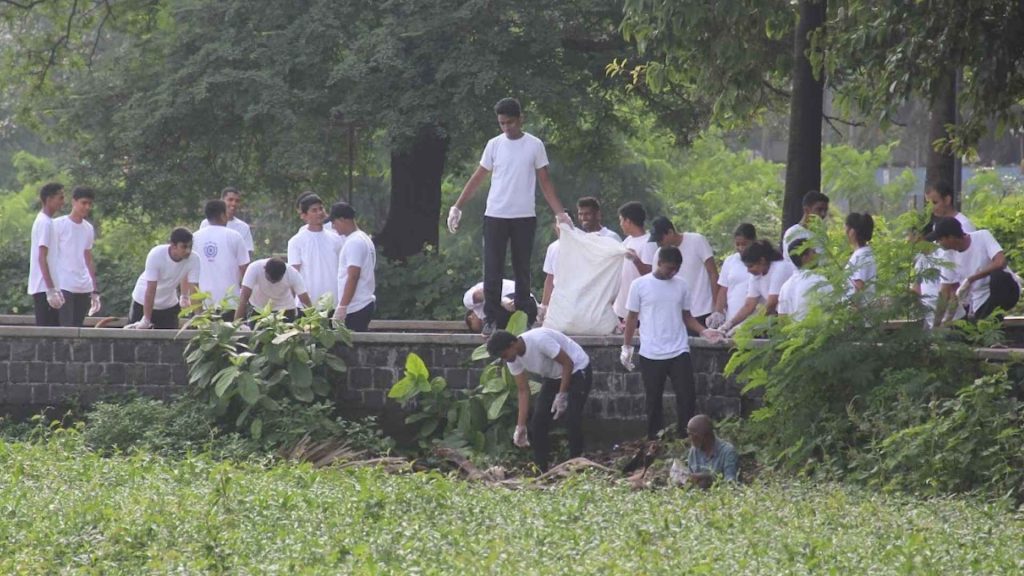
Scientific Plantation Approach – Use of Ecological Restoration Techniques
Earth5R adopts scientifically validated ecological restoration techniques to maximize biodiversity recovery. Key approaches include:
The Miyawaki Method
The Miyawaki method, a dense afforestation technique pioneered by Japanese botanist Akira Miyawaki, is a highly effective approach to urban reforestation. This method focuses on using native species to create mini-forests in urban spaces, promoting rapid growth and ecological restoration. Trees planted using this technique grow 10 times faster and absorb 30 times more CO₂ than conventional plantations, making it a powerful tool for climate action.
In addition, the Miyawaki method enables the development of self-sustaining ecosystems within just 3 to 5 years, requiring minimal human intervention after the initial phase. Earth5R has successfully implemented this method in Indian cities such as Mumbai, Bengaluru, and Chennai, where it has established thriving native micro-forests, contributing to biodiversity conservation, air purification, and urban cooling.
Permaculture Principles
Earth5R follows permaculture principles, adopting a holistic approach to ecological restoration that ensures long-term biodiversity revival. Central to this approach are soil regeneration techniques, including natural composting, mulching, and microbial enrichment, which enhance soil health and fertility. To promote water conservation, Earth5R implements rainwater harvesting and natural irrigation methods, reducing reliance on external water sources while ensuring sustainable hydration for plant life.
Not to mention, interplanting diverse native species fosters a self-sustaining ecosystem, where plants support each other’s growth and attract pollinators, strengthening local biodiversity. In areas affected by industrial pollution, Earth5R employs bioremediation strategies like phytoremediation, using native plants to absorb heavy metals and toxins from the soil, gradually restoring its health.
By integrating these scientifically driven and environmentally sustainable techniques, Earth5R ensures that afforestation efforts are efficient, resilient, and ecologically impactful.
Data-Driven Monitoring & Assessment – Tracking Biodiversity Revival
Restoration success is measured through continuous monitoring and data analysis, ensuring that afforestation efforts lead to tangible ecological improvements. Earth5R employs a range of scientific methods to track biodiversity progress effectively. Biodiversity surveys are conducted regularly to assess plant, bird, insect, and microbial species, providing insights into ecosystem recovery.
Soil health analysis monitors organic matter content, microbial activity, and nutrient levels, helping evaluate the regeneration of soil ecosystems. To measure the climate impact, Earth5R tracks carbon sequestration using specialized tools that assess CO₂ absorption by native plantations. Likewise, satellite and drone imaging capture real-time data on vegetation density and tree growth, offering a detailed view of afforestation success.
By integrating these data-driven monitoring techniques, Earth5R ensures that its restoration projects are scientific, effective, and sustainable. One of Earth5R’s successful case studies in Mumbai’s degraded industrial zones showed a 30% increase in native bird species and a significant reduction in air pollutants just two years after the plantation drive. Similar biodiversity improvements have been recorded in Delhi, Pune, and Chennai, proving the effectiveness of Earth5R’s blueprint.
Earth5R’s Urban Biodiversity Revival Blueprint offers a replicable, science-backed solution to combat urban biodiversity loss. By combining data-driven site selection, community engagement, ecological restoration techniques, and scientific monitoring, this approach ensures long-lasting environmental impact. In the next section, we will explore case studies and success stories from Earth5R’s projects, demonstrating real-world biodiversity transformation in urban spaces.
Case Studies & Success Stories
Earth5R’s Urban Biodiversity Revival Blueprint has been successfully implemented across various cities, restoring degraded urban landscapes into thriving ecosystems. By employing scientific methodologies, native plantation drives, and community engagement, Earth5R has significantly improved biodiversity in several urban environments. This section highlights key case studies, research findings on biodiversity improvement post-plantation, and comparisons with similar global initiatives.
Case Study: Reviving Biodiversity in Mumbai’s Degraded Industrial Zone
Mumbai, one of India’s most densely populated cities, has witnessed rapid urbanization, leading to the loss of its native green cover. Earth5R launched a native plantation drive in a degraded industrial zone on the city’s outskirts, where soil contamination, air pollution, and habitat destruction had significantly reduced biodiversity.
Earth5R has spearheaded impactful afforestation initiatives by planting over 10,000 native trees using the Miyawaki method, creating self-sustaining mini-forests that grow rapidly and enhance urban biodiversity. To restore contaminated soil, the organization has employed phytoremediation techniques, utilizing native plants to absorb heavy metals and toxins, gradually improving soil health.
Ensuring long-term sustainability, Earth5R has also engaged over 500 local volunteers, fostering community involvement in the maintenance and protection of these green spaces, thereby promoting environmental stewardship and resilience.
Impact & Research Findings:
Within just two years, Earth5R’s afforestation initiatives have led to remarkable ecological improvements. Native bird populations increased by 30%, with species like the Indian Paradise Flycatcher and Purple Sunbird returning to restored habitats.
Soil health improved significantly, showing a 25% increase in organic matter content, which enhanced microbial activity and overall ecosystem resilience. Additionally, air quality monitoring revealed a 15% reduction in PM2.5 pollution levels, highlighting the positive impact of increased tree cover in filtering pollutants and improving urban air quality.
Case Study: Biodiversity Enhancement in Chennai’s Coastal Urban Wetlands
Chennai’s Pallikaranai Wetland, one of South India’s last remaining freshwater marshes, has faced severe habitat degradation due to encroachments and pollution. In collaboration with local authorities, Earth5R conducted a native plantation and wetland restoration project.
Earth5R has undertaken key initiatives to restore and protect fragile wetland ecosystems through large-scale afforestation and community engagement. The organization has planted over 5,000 mangrove and wetland tree species, helping to stabilize coastlines, prevent erosion, and support marine biodiversity. Recognizing the importance of local involvement, Earth5R has also conducted community education programs, empowering fishermen and residents to actively participate in conservation efforts.
Besides, to enhance water quality and wildlife habitats, the initiative introduced floating islands made of native plant species, which serve as natural filters for pollutants while providing nesting grounds for birds and other aquatic species.
Earth5R’s wetland restoration efforts have led to significant ecological and economic benefits, as demonstrated by impact assessments and research findings. There has been a 30% increase in fish diversity, which has directly supported local livelihoods by enhancing fishing opportunities. Additionally, the return of Greater Flamingos and Painted Storks—species that had been absent for five years—highlights the success of habitat restoration in attracting migratory birds.
Moreover, the implementation of bioremediation techniques has contributed to a notable reduction in heavy metal contamination in water, improving overall ecosystem health and water quality for both wildlife and local communities.
Case Study: Urban Biodiversity Restoration in Pune’s Public Parks
Pune’s expanding urban infrastructure has led to a decline in native tree cover, threatening biodiversity. Earth5R launched an initiative to convert underutilized public parks into biodiversity hotspots by reintroducing native flora.
Earth5R has implemented key initiatives to enhance urban biodiversity and ecosystem resilience by promoting native vegetation and sustainable water management. The organization has replaced exotic ornamental trees with native flowering and fruit-bearing species, restoring the natural habitat and providing essential food sources for local wildlife.
To support pollinators, Earth5R has also created pollinator-friendly gardens, attracting bees, butterflies, and other beneficial insects, which play a crucial role in maintaining ecological balance. Additionally, the initiative has implemented rainwater harvesting systems, ensuring a sustainable water supply for these green spaces while reducing dependence on external water sources.
Earth5R’s ecological restoration efforts have yielded significant environmental benefits, as demonstrated by research findings and impact assessments. The initiative has led to a 40% increase in native butterfly species, enhancing pollination and biodiversity in urban green spaces. Likewise, the expansion of green cover has contributed to a 2°C reduction in local temperatures, effectively mitigating the urban heat island effect and creating a cooler, more sustainable environment.
Furthermore, the implementation of rainwater harvesting and native vegetation has improved groundwater retention, reducing the reliance on external water sources for park maintenance and ensuring long-term ecological resilience.
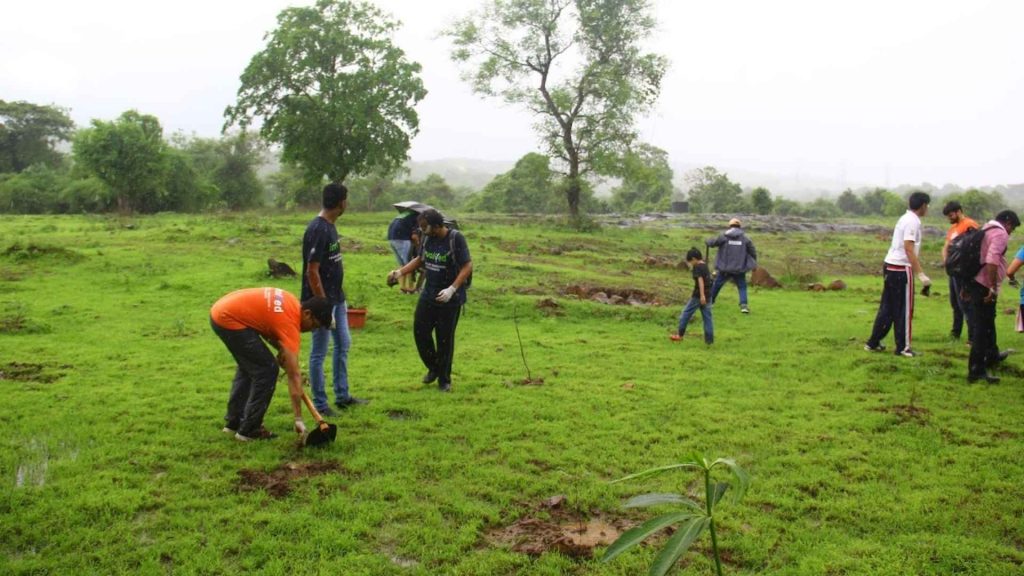
Comparison with Similar Global Initiatives
Singapore’s Native Rainforest Restoration
Singapore has successfully integrated native plantation efforts into its urban planning policies, demonstrating the power of large-scale ecological restoration in cities. Through initiatives like the One Million Trees Movement, the city has worked to restore native rainforests, leading to remarkable environmental benefits. These efforts have resulted in a 25% increase in native bird populations, as urban forests now provide essential nesting and foraging habitats.
As well, the reappearance of endangered native plant species highlights the success of restoring natural biodiversity within the city. Furthermore, the expansion of green cover has contributed to enhanced urban cooling effects, effectively reducing surface temperatures and mitigating the urban heat island effect, making Singapore a model for sustainable urban forestry.
New York’s MillionTreesNYC Initiative
New York City’s large-scale tree-planting program has played a crucial role in enhancing urban biodiversity by prioritizing the plantation of native trees and shrubs. This initiative has led to a 10% improvement in air quality, as the increased tree cover helps to filter pollutants and reduce carbon emissions. Additionally, the expansion of urban green spaces has provided vital habitats for local wildlife, promoting ecological balance and fostering a healthier urban environment for both residents and native species.
Curitiba’s Green Corridors in Brazil
Curitiba, renowned for its sustainability initiatives, has successfully implemented green corridors to restore native habitats and enhance urban resilience. These efforts have led to a 15% increase in urban biodiversity, particularly benefiting pollinators and small mammals by providing essential food sources and shelter.
Additionally, the restoration of native vegetation has improved soil permeability, helping to reduce urban flooding by enhancing natural water absorption and drainage. This initiative demonstrates how strategic urban greening can simultaneously support biodiversity and strengthen climate adaptation in cities.
Earth5R’s scientifically backed, community-driven native plantation projects have successfully revitalized degraded urban spaces, improved biodiversity, and enhanced ecological resilience. Research findings from these initiatives provide strong evidence that native plantations can significantly contribute to climate mitigation, air quality improvement, and habitat restoration.
By drawing parallels with successful global models, Earth5R’s blueprint serves as a scalable, replicable framework for urban biodiversity restoration worldwide. The next section will explore policy implications and scalability, discussing how government regulations, corporate partnerships, and urban planning can further expand such restoration efforts.
Government Policies Supporting Urban Biodiversity
Green Infrastructure & Urban Planning Regulations
Many cities and countries worldwide are integrating green infrastructure policies to enhance urban biodiversity and environmental resilience. Cities like Singapore and Stockholm mandate a minimum green space per capita and actively incentivize green rooftops and vertical forests, creating more sustainable and livable urban environments.
In India, the National Biodiversity Action Plan (NBAP) promotes the integration of native green spaces into urban master plans, ensuring that ecological considerations are central to city development. Similarly, the EU’s Urban Green Infrastructure Strategy encourages the adoption of nature-based solutions to restore urban ecosystems, demonstrating a growing global commitment to sustainable urban planning.
Afforestation and Native Species Conservation
India’s Compensatory Afforestation Act (2016) ensures that deforestation caused by urbanization is offset through native tree plantations, promoting ecological balance and sustainability. On a global scale, the UN Decade on Ecosystem Restoration (2021-2030) advocates for policies that support native afforestation, encouraging nations to prioritize environmental restoration efforts. Together, these initiatives highlight the growing commitment to reversing biodiversity loss and integrating nature-based solutions into urban and regional planning.
Community-Based Conservation Programs
Colombia’s ‘Bogotá Biodiversa’ policy actively engages local communities in urban restoration efforts, fostering public participation in native plantation and biodiversity conservation. In Europe, several cities have introduced tax incentives for individuals and businesses that adopt native plantations, encouraging greener urban spaces and ecological restoration.
These initiatives reflect a growing global movement toward community-driven and policy-supported environmental sustainability, ensuring that urban areas become more resilient and biodiverse. While these policies create a supportive framework, their implementation is often hindered by lack of enforcement, limited public participation, and competition for urban land use.
Earth5R’s Model as a Replicable Framework
Earth5R’s scientific, community-driven approach offers a scalable model that can be replicated in cities worldwide to restore degraded urban spaces. By employing data-driven site selection through GIS mapping, biodiversity surveys, and ecological assessments, the initiative ensures scientific precision in identifying areas in need of intervention. Its participatory model actively engages local communities, corporates, and government bodies, fostering collaboration in restoration efforts.
Proven ecological restoration techniques, including the Miyawaki method, permaculture principles, and native afforestation, have demonstrated consistent success in diverse urban environments. Additionally, Earth5R leverages technology such as drones, IoT sensors, and AI-driven biodiversity tracking for long-term sustainability and transparent impact assessment, ensuring measurable and lasting environmental improvements.
Challenges in Large-Scale Implementation & Potential Solutions
Urban Land Constraints & Conflicting Development Priorities
Rapid urban expansion often prioritizes infrastructure development over the preservation of green spaces, leading to environmental degradation and reduced air quality. To address this challenge, policies must mandate a minimum level of green coverage, promote urban agroforestry, and integrate green infrastructure into city planning. Implementing solutions such as green rooftops, vertical gardens, and tree-lined streets can help balance urban growth with environmental sustainability, enhancing air quality and overall well-being.
Limited Funding & Financial Barriers
Urban afforestation and restoration efforts require sustained investment to achieve long-term success. Public-Private Partnerships (PPPs) play a crucial role in funding large-scale urban biodiversity projects by fostering collaboration between governments, businesses, and communities to restore green spaces.
As well, financial mechanisms such as Green Bonds and Carbon Credits incentivize corporations to invest in urban afforestation and ecological restoration, aligning business interests with sustainability goals. These approaches not only ensure continuous funding but also promote shared responsibility among stakeholders, enhancing urban biodiversity and strengthening environmental resilience.
Maintenance & Long-Term Sustainability
Many afforestation efforts fail due to a lack of post-plantation maintenance, making long-term sustainability a challenge. Community-based stewardship models empower citizen groups to take an active role in maintaining urban forests, ensuring the survival and growth of native plantations through local participation. Complementing these efforts, tech-driven monitoring systems leverage remote sensing, AI, and data analytics to track biodiversity levels and assess the health of plantations.
By integrating community engagement with technology-driven insights, cities can create resilient green spaces that not only thrive but also adapt to changing environmental conditions, contributing to long-term ecological sustainability.
Resistance to Native Plant Adoption
Urban landscaping often prioritizes ornamental, non-native species, which can disrupt local ecosystems and reduce biodiversity. To address this, awareness campaigns and policy incentives play a crucial role in promoting the plantation of native species, fostering ecological balance, and enhancing urban biodiversity.
Besides, regulations banning invasive species in public landscaping projects ensure that only environmentally sustainable plant species are used, protecting local ecosystems. By combining education, incentives, and regulatory measures, cities can create greener, more resilient urban environments that support biodiversity, improve air quality, and enhance climate adaptation efforts.
For urban biodiversity restoration to succeed at scale, it requires strong policy support, scientific methodologies, community involvement, and sustainable financing mechanisms. Earth5R’s replicable and scalable model, when combined with government policies and technological advancements, can drive a global movement for urban ecosystem restoration. The next section will summarize key takeaways and outline future directions for expanding urban biodiversity initiatives.
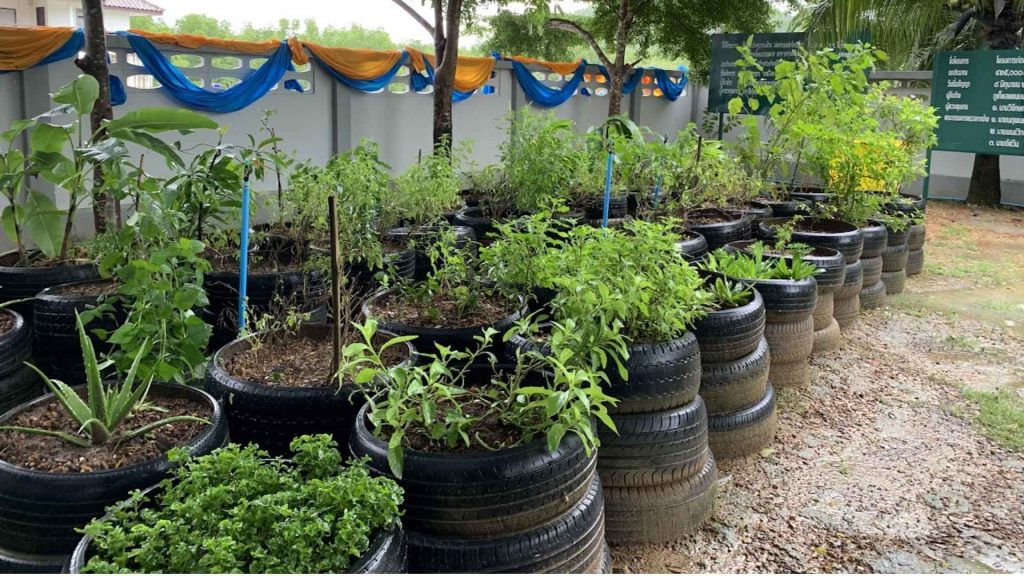
Restoring Urban Ecosystems: A Collective Blueprint for a Greener Future
Urban biodiversity is essential for maintaining ecological balance, climate resilience, and public well-being. However, rapid urbanization has led to habitat loss, declining native species, and degraded green spaces. Earth5R’s Urban Biodiversity Revival Blueprint has demonstrated that native plantation drives, when backed by scientific methodologies, community involvement, and policy support, can successfully restore urban ecosystems.
Key Findings & Impact of Native Plantation Drives
Native plantation drives play a vital role in enhancing biodiversity, providing essential habitats for pollinators, birds, and local fauna, leading to ecological restoration. Scientific methods such as the Miyawaki technique and permaculture principles accelerate forest growth, ensuring long-term sustainability. Community-led afforestation programs further empower citizens to take ownership of urban green spaces, fostering environmental stewardship.
Additionally, technology-driven monitoring enables data-backed evaluation of biodiversity revival, ensuring measurable progress. Case studies from Mumbai, Chennai, and Pune demonstrate the tangible environmental and social impact of Earth5R’s initiatives, showcasing how scientific, community-driven, and technology-enabled approaches can transform urban landscapes.
The Role of Policymakers, Businesses, and Citizens
Policymakers must prioritize biodiversity restoration by integrating native afforestation, green corridors, and conservation incentives into urban planning frameworks. At the same time, businesses can support these efforts through CSR initiatives, green financing, and carbon offset programs, ensuring sustained funding for urban greening projects.
However, true success depends on citizen participation, as individuals play a crucial role in joining native plantation drives, advocating for green policies, and adopting sustainable practices within their communities. By fostering collaboration between governments, businesses, and citizens, cities can achieve long-term ecological and environmental resilience.
FAQs on Earth5R’s Urban Biodiversity Revival Blueprint through Native Plantation Drives
What is urban biodiversity, and why is it important?
Urban biodiversity refers to the variety of plant and animal species in cities. It is essential for ecological balance, climate resilience, air quality improvement, and human well-being.
How does urbanization impact biodiversity?
Urbanization leads to habitat destruction, pollution, climate change, and the introduction of invasive species, all of which threaten native biodiversity.
What is Earth5R’s Urban Biodiversity Revival Blueprint?
It is a scientific, community-driven approach to restoring urban green spaces through native plantation drives, ecological restoration techniques, and data-driven monitoring.
How do native plantations help in restoring urban biodiversity?
Native plants support local wildlife, improve soil and air quality, increase carbon sequestration, and contribute to climate resilience.
What is the difference between native and exotic plant species?
Native species are naturally found in a specific region and support local biodiversity, while exotic species are introduced and may disrupt ecosystems.
Why are exotic plants not suitable for urban afforestation?
Exotic plants can outcompete native species, reduce biodiversity, and fail to provide suitable habitats for local wildlife.
What are some successful native plantation methods used by Earth5R?
Techniques like the Miyawaki method, permaculture principles, and wetland restoration are used for fast-growing, sustainable afforestation.
How do native plantations improve air and water quality?
Trees absorb pollutants, reduce particulate matter in the air, and enhance groundwater recharge through improved soil retention.
How does Earth5R select sites for native plantations?
Using GIS mapping, biodiversity surveys, and ecological assessments, degraded urban spaces with restoration potential are identified.
What role do communities play in biodiversity restoration?
Local communities help in planting, maintaining, and monitoring urban forests, ensuring long-term sustainability.
How can businesses and corporations support urban biodiversity revival?
Through CSR initiatives, green financing, and carbon offset programs, companies can fund large-scale afforestation projects.
Can individuals participate in Earth5R’s native plantation drives?
Yes, volunteers can join afforestation programs, help with maintenance, and spread awareness about biodiversity conservation.
What scientific evidence supports the success of Earth5R’s model?
Research shows increased bird populations, improved soil quality, lower air pollution, and faster urban cooling effects in areas restored with native plantations.
How does Earth5R monitor biodiversity recovery in urban forests?
Using drones, IoT sensors, and AI-driven tracking, biodiversity indicators like species diversity and soil health are monitored.
Are there any case studies showing the impact of Earth5R’s projects?
Yes, successful projects in Mumbai (industrial zone restoration), Chennai (wetland revival), and Pune (urban park transformation) have led to increased native species populations.
What policies support urban biodiversity restoration?
Policies like India’s Compensatory Afforestation Act, the EU’s Green Infrastructure Strategy, and Singapore’s One Million Trees Movement promote urban greening.
How can urban planners integrate biodiversity into city development?
By incorporating native plantations, green corridors, and nature-based solutions into zoning laws and infrastructure planning.
What are the challenges in large-scale urban biodiversity revival?
Land constraints, funding limitations, lack of maintenance, and resistance to replacing ornamental plants with native species.
How can Earth5R’s model be replicated in other cities?
By adapting data-driven site selection, community engagement, scientific afforestation methods, and policy advocacy to local conditions.
What is the future of urban biodiversity restoration?
With advancements in technology, policy support, and increased awareness, cities can become greener, more resilient, and biodiverse, ensuring sustainable urban living.
Call to Action
Earth5R’s success in revitalizing urban biodiversity demonstrates the power of collaborative, community-driven environmental action. Through initiatives like community-based urban gardening, Earth5R has transformed 650 urban hectares into green havens, offsetting 500,000 tons of CO₂ and mobilizing over 25,000 environmentalists via its app.
To replicate and scale such efforts globally, partnerships among governments, businesses, and individuals are essential. By investing in sustainable urban development and fostering community engagement, we can create greener, healthier, and more resilient cities for future generations. This collective responsibility ensures that urban biodiversity revival becomes an integral part of our global environmental strategy.
~Authored by Ameya Satam

